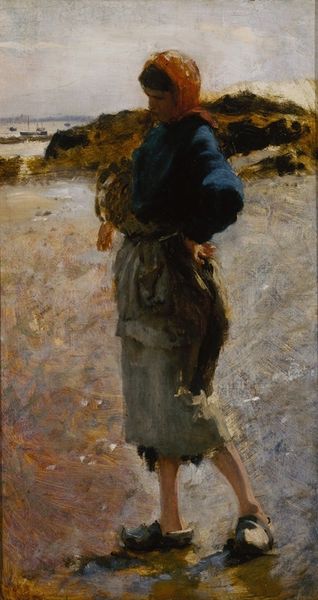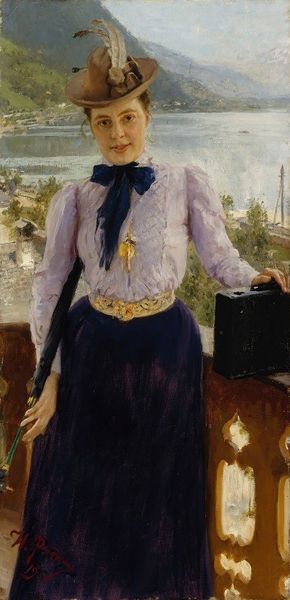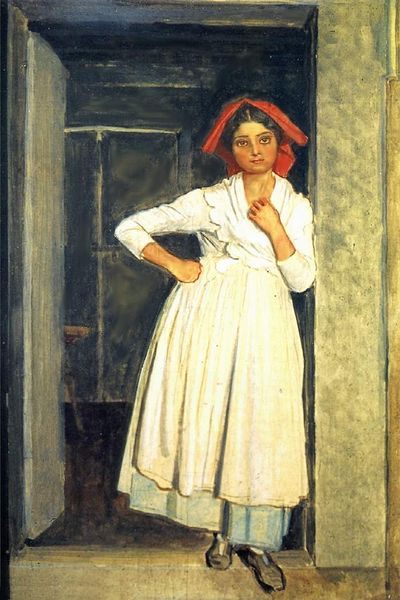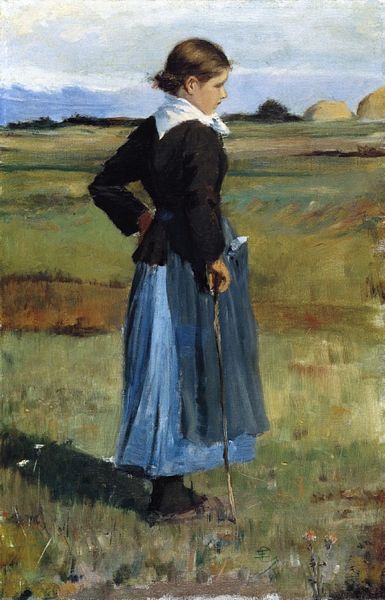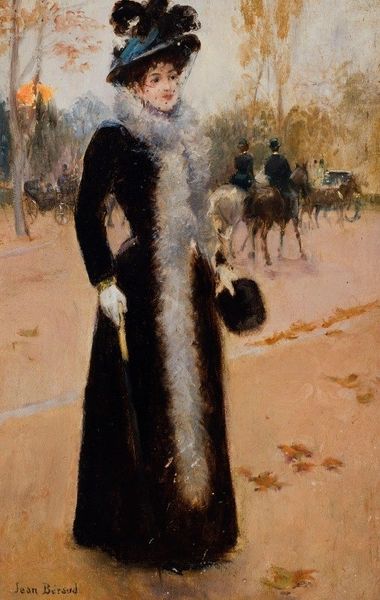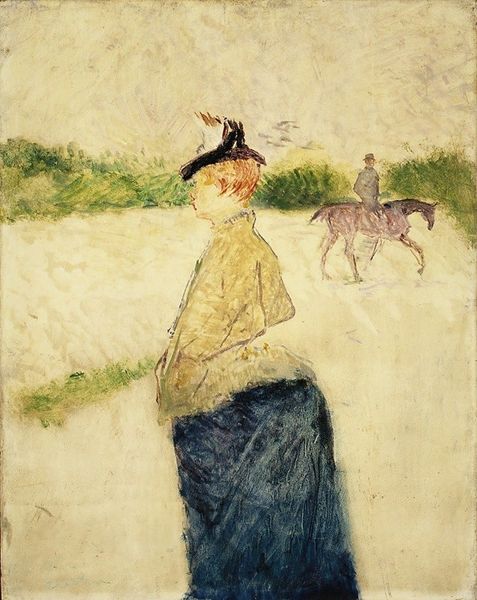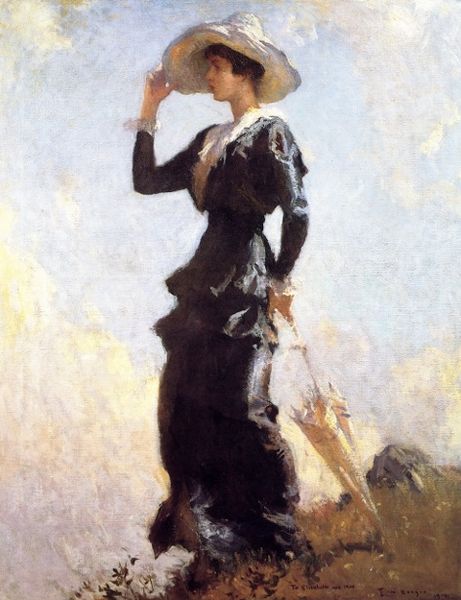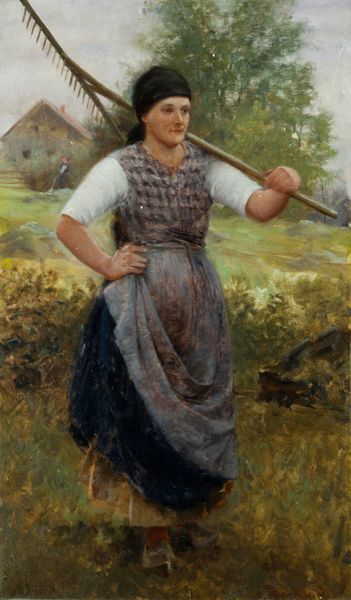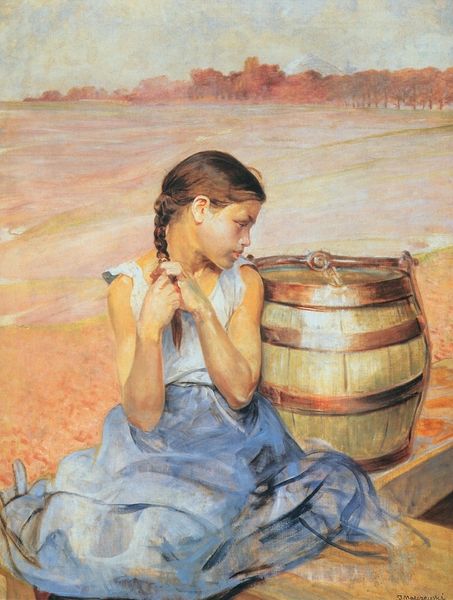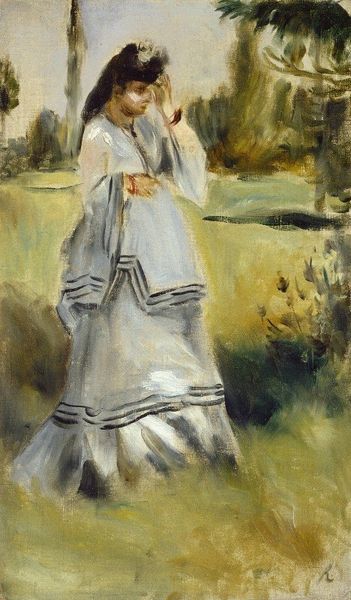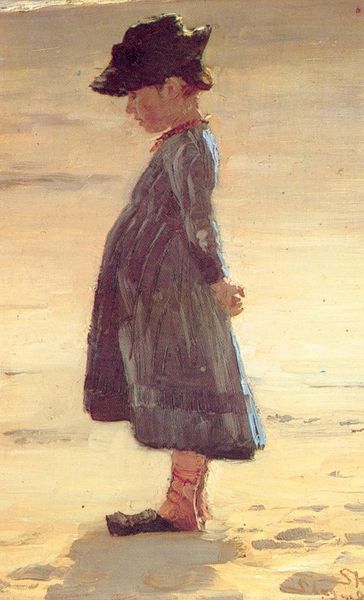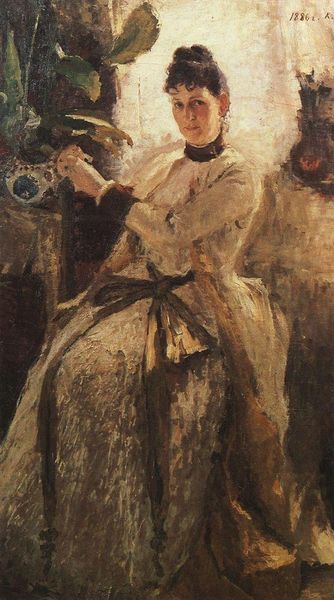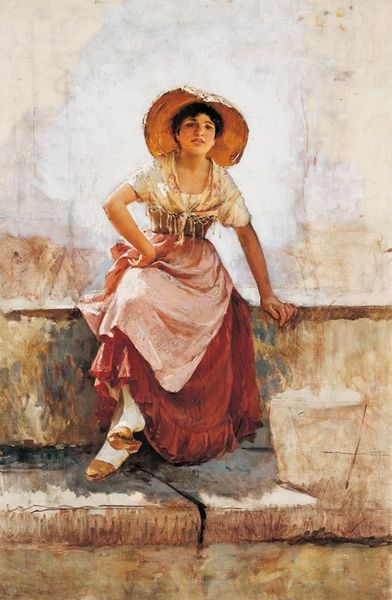
Dimensions: support: 1190 x 695 mm frame: 1418 x 915 x 82 mm
Copyright: CC-BY-NC-ND 4.0 DEED, Photo: Tate
Editor: Here we have Henry Herbert La Thangue’s painting, *The Return of the Reapers*. It feels quite peaceful, though the figures seem weary. What does this painting tell us about rural life at the time? Curator: La Thangue was fascinated by rural communities and their relationship to the land. Considering the late 19th century context, the painting reflects a nostalgic view of agricultural life amidst growing industrialization. Note how he idealizes the laborers, presenting a romantic vision of their work. Editor: So, it's less a realistic portrayal and more of a commentary on the changing times? Curator: Precisely. It engages with broader social anxieties about the loss of traditional ways of life and the perceived purity of the countryside. Editor: I see it now. It’s a powerful statement disguised as a simple scene.
Comments
tate 7 months ago
⋮
http://www.tate.org.uk/art/artworks/la-thangue-the-return-of-the-reapers-t03413
Join the conversation
Join millions of artists and users on Artera today and experience the ultimate creative platform.
tate 7 months ago
⋮
La Thangue was born in Croydon, but he trained in Paris and was particularly inspired by French artists. The work of Gustave Courbet and Jules Bastien-Lepage encouraged him to paint realist rural pictures, and he was also influenced by the Impressionists’ commitment to painting before nature.In France, La Thangue adopted the ‘square brush’ technique used here to striking effect. It allowed him to cover the canvas quickly and to capture fleeting light effects. He painted this work in Norfolk, and characteristically placed the figures against a high horizon, flattening the picture space. Gallery label, July 2007
